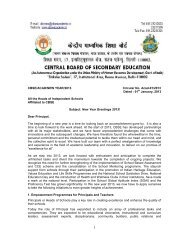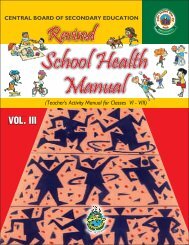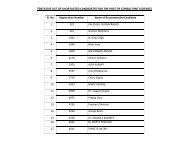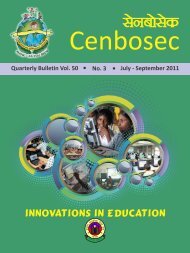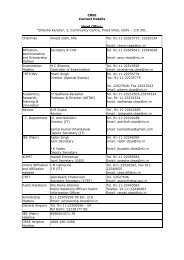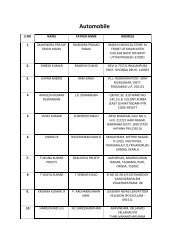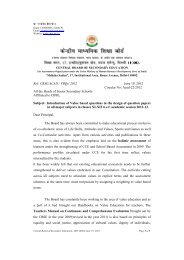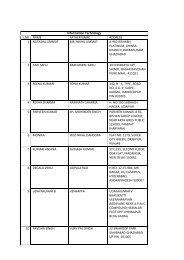CCE Manual VI - VIII - CBSE
CCE Manual VI - VIII - CBSE
CCE Manual VI - VIII - CBSE
You also want an ePaper? Increase the reach of your titles
YUMPU automatically turns print PDFs into web optimized ePapers that Google loves.
Continuous and Comprehensive Evaluation<strong>Manual</strong> for TeachersAnnexure 1Types ofAssessmenttools/techniquesAdvantagesCaution for teachersSuggestions forimplementation6. Rating ScalesThese can be usedto record the qualityof a student’s workand then judge thequality againstspecified criteria.Holistic ratingscales require asingle, overallassessment of apiece of work.• Various aspects ofdevelopment canbe assessed.• Can be used toassess individualsas well as groups.• Assessments canbe made duringvarying timeperiods and indifferentenvironmentsettings.• Evidence of thechild’sperformance/knowledge isbased on ‘on-thespot’record.• Over time, detailedobservations ofbehaviour as wellas interests,challenges,patterns/trendsemerge whichallow teachers tohave acomprehensivepicture/view of thechild.• Avoid inferences/interpretations ofgiving judgements.Concentrate ontaking down whatis seen.• The skill of theobserver maydetermine what isobserved.• Be sensitive andunobtrusive in theway theobservation isdone. This does notnecessarily meanbeing at a distance.• Make theobservations over aperiod of time, andacross differentactivities andsettings.• Record details thatnot only describethe actions butreveal how a child‘feels’ about whatshe/he is doing.• Also suggestcorrectivemeasures.• Comments can benoted in‘parentheses’based on whichprocesses can beinferred at a laterpoint of time.105





